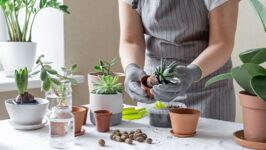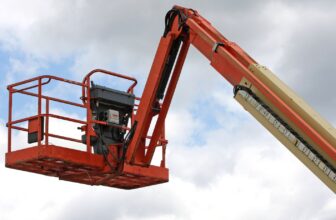
Indoor Gardening For Beginners: Essential Tips And Tricks

Indoor gardening offers a slice of nature’s tranquility in the confines of your home. It’s a rewarding hobby that beautifies your space, purifies the air, and can even provide fresh herbs and veggies. Whether you’re living in a small apartment or a large house, indoor gardening is a flexible and fulfilling pursuit.
Here are some tips and tricks to help you create a flourishing indoor garden that brings life and color to your home:
1. Choosing The Right Plants
Assess the light levels in your space. Different plants have varying light requirements; some thrive in bright, indirect sunlight, while others, like snake plants, zz plants, and vine plants indoors, are tolerant of low-light environments. Also, consider the humidity and temperature of your home. Tropical plants, such as ferns and orchids, prefer humid environments, while cacti and succulents are more suited to dry conditions.
If you’re planning a mini garden or terrarium, cacti and Terrario Suculentas are excellent choices. They’re low-maintenance plants due to their water efficiency. Adapted to store water in their stems, they can thrive in dry environments with infrequent watering.
When selecting plants, it’s also important to consider their maintenance needs and how they align with your lifestyle and gardening experience. For instance, spider plants, peace lilies, and rubber plants are known for their resilience and can tolerate occasional neglect, making them perfect for beginners.
It’s also beneficial to start with smaller plants, as they’re typically easier to care for and can be moved around easily to find the perfect spot in your home. As you gain more experience and confidence, you can gradually introduce more diverse and demanding plants into your indoor garden.
2. Pots And Planters
The size of your pots and planters should accommodate the growth of your chosen plants, giving their roots enough room to expand without being overly spacious. For example, while a 6 foot long outdoor planter might be ideal for a large patio or garden, smaller pots are ideal if you have a more compact space.
Material-wise, options range from plastic, which is lightweight and retains moisture well, to terra cotta, which is porous and allows soil to breathe, making it a good choice for plants that prefer drier soil.

Drainage is another critical factor in pot selection. Pots with adequate drainage holes help prevent water from accumulating at the bottom, which can lead to root rot. But if ever you fall in love with ones that lack drainage holes, you can add a layer of rocks or gravel at the bottom to create a space for excess water to pool away from the plant’s roots.
Additionally, consider the aesthetic aspect of your pots and planters; they shouldn’t only be functional but also complement your home decor.
3. Soil And Fertilization
Unlike outdoor gardening, where plants can benefit from the natural nutrients found in garden soil, indoor plants rely entirely on the potting mix provided. The right type of soil ensures proper drainage, aeration, and nutrient availability, which are crucial for plant health.
Indoor plants generally thrive in a lightweight, well-draining potting mix, which prevents waterlogging and root rot. This mix typically contains ingredients like peat moss, perlite, and vermiculite. Avoid using garden soil or topsoil, as these can be too dense for potted plants and may contain pests or diseases.
Fertilization is another key aspect to consider in indoor gardening. Generally, indoor plants benefit from a balanced, water-soluble fertilizer applied during their active growing season (usually spring and summer). Overfertilization can be detrimental, leading to leaf burn or excessive, weak growth, so it’s important to follow the recommended dosage and frequency.
For beginners, slow-release fertilizers can be a convenient option, as they gradually release nutrients over time. Also, remember that while some plants may need regular fertilization, others, like cacti and succulents, require minimal feeding.
4. Watering Wisely
The key is to understand the specific watering needs of each plant, as these can vary significantly. A general rule of thumb is to water when the top inch of the soil feels dry to the touch. This method encourages deep root growth and prevents oversaturation of the soil.
Additionally, the amount and frequency of watering depend on factors like the size of the plant, the potting mix used, and the environmental conditions of your home, including humidity and light levels. It’s also beneficial to use water at room temperature, as cold water can shock the plant’s roots.
5. Pruning And Maintenance
Regular pruning helps manage plant size, encourages new growth, and removes dead or yellowing leaves, which can be a hotspot for pests and diseases. It’s important to use clean, sharp scissors or pruning shears to make clean cuts without damaging the plants.
Moreover, wiping the leaves with a damp cloth not only keeps the plants looking fresh but also aids in photosynthesis by removing dust that can block light. Checking for signs of pests, such as discolored leaves or sticky residue, and addressing them promptly with appropriate treatments is also crucial.

Lastly, simple maintenance tasks like rotating the plant periodically for even light exposure and repotting when it outgrows its current container will also contribute to its overall health and vitality.
Conclusion
Indoor gardening is a journey of discovery and learning. It’s about forming a connection with nature, understanding the nuances of plant care, and cultivating a green oasis within your home. Embrace the challenges, celebrate the successes, and watch as your indoor garden transforms your space and spirit.



















































































